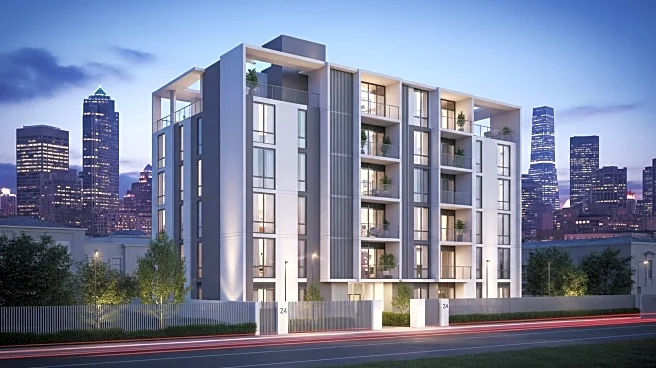What is the story about?
What's Happening?
Habyt, a leader in flexible housing solutions, is expanding its presence in Berlin with the upcoming opening of DOXS NKLN. This project, developed by Trockland in collaboration with architecture studio GRAFT, is set to transform a former recycling yard into a vibrant mixed-use development along the Neukölln Ship Canal. The design integrates sustainable features such as green roofs, modular construction, and solar energy, while offering 317 flex units for short and long-term stays. The development aims to foster social interaction and community engagement through shared spaces like a communal lounge, fitness center, and coworking areas.
Why It's Important?
The expansion of Habyt into Berlin represents a significant step in the evolution of urban living spaces, emphasizing sustainability and community engagement. By offering flexible living solutions, Habyt addresses the growing demand for adaptable housing in urban areas, potentially influencing housing policies and development strategies in other cities. The project also highlights the importance of integrating sustainable practices in urban development, which could lead to broader adoption of eco-friendly construction methods and community-focused designs.
What's Next?
DOXS NKLN is set to welcome its first residents in 2028, marking a new chapter in flexible urban living. As the project progresses, it may serve as a model for future developments in Berlin and beyond, encouraging other developers to adopt similar sustainable and community-oriented approaches. The success of this project could also influence local government policies on housing and urban development, potentially leading to increased support for similar initiatives.
Beyond the Headlines
The DOXS NKLN project not only transforms a former industrial site but also contributes to the cultural and creative scene in Neukölln. By integrating public spaces and promoting social interaction, the development could enhance the area's cultural vibrancy and attract more creative professionals. This cultural impact may lead to increased investment in the neighborhood, further boosting its economic and social development.
AI Generated Content
Do you find this article useful?
















